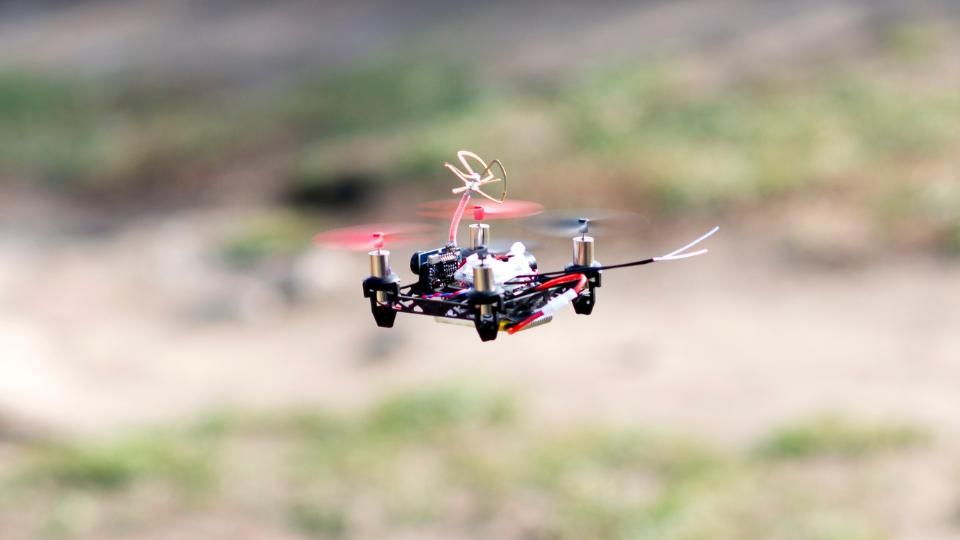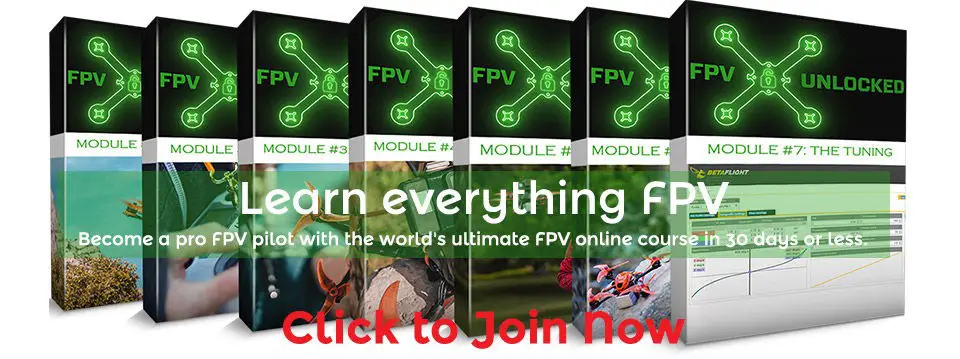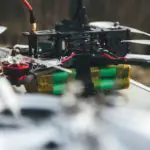A common question from FPV beginners is, “can an FPV drone hover?” That’s a fair question, since many non-FPV drone pilots will let their drone hover in the air while they enjoy watching the scenery, or when they feel panic.
In total, FPV drones can hover. But, hovering is not easy. It has to be done manually, and requires practice. The use of certain sensors in FPV drones can allow easier hovering. But most FPV drones don’t have that, because FPV is about fast and fluid flight instead of staying still in the air.
Hovering is a big topic in the FPV hobby, at least for most beginners. Isn’t it good if you can let your drone hover by itself when you have a panic attack? Unfortunately, that’s not what FPV drones are about.
How does A Drone Hover?

When the motors of a drone spin, they produce thrust to lift the drone. If the amount of thrust produced by the drone is equivalent to the amount of the gravity that pulls it down, the drone hovers.
Higher end drones use sensors to detect the location and altitude of the drone. The flight controller (FC) then adjusts the motor spinning speed through the sensor-FC feedback loop so that the drone can hover at a fixed height and position (Read more on how drone works).
Hovering is important for those who want to take aerial video from a fixed spot.
Why FPV Drones don’t Hover as Easy as Normal Drones?
FPV drones are designed with agile movement so that they can compete in races, or perform aerial tricks. Hence, almost all FPV drones do not have the necessary sensors for auto hovering.
Instead, the pilot needs to manually adjust the throttle so that the drone hovers.
For most FPV pilots, hovering is not a required drone feature since their drones are constantly moving.
How to Hover An FPV Drone?
To hover an FPV drone, slowly fly the drone to the desired height. Release some throttle until the drone stops ascending. Increase the throttle if it descends.
Because there are no sensors, the drone will inevitably drift due to air movement. Slightly adjust the position so that it stays still.
Keep your drone at least 3 feet away from the ground or surface when hovering. Otherwise, your drone will bounce up and down.
So, what causes the bouncing? If you are too near to the ground, the downward forces generated by the motors will bounce off the ground and push the drone up. But, as the drone goes up, it is no longer affected by the bounced forces, and hence will dip. This cycle will repeat endlessly if you are too near to the ground.

Remove Throttle Ratchet to Improve Hovering
Some pilots recommend removing the throttle ratchet on the radio transmitter to make your control finer, so that you can accurately push the throttle to the point where the drone can hover.
In case you don’t know, a ratchet is basically a structure with teeth that holds your throttle stick so that it doesn’t move all the way up or down by accident.
Every radio transmitter has different designs. You can easily find instructions to remove the throttle ratchet of your radio model in YouTube.
Note that not all FPV pilots fly without throttle ratchet. Some prefer to fly with it.
Can I Make My FPV Drone Hover at A Fix Position and Altitude?
You can make your drone hover at a fixed position and altitude if you have the appropriate sensors and software installed.
First, you need to install iNAV (Github link) to your FC. Like Betaflight, iNAV is a software of the FC. Not all FC supports iNAV, so, check the compatibility first.
If you are wondering whether you can use Betaflight instead of iNAV for position and altitude hold, it is not possible, at least for now, and probably not in the near future.
The sensors required for auto hovering are listed below. With those sensors available, you can set up hold position and altitude in iNAV.
- Barometer
- Compass
- GPS
- Accelerometer
Most FCs already come with an accelerometer, as a part of their IMU (Inertial Measurement Unit).


